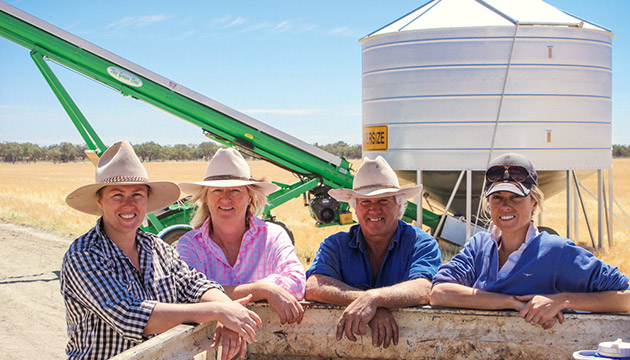In far western New South Wales, pastoralists are pulling in a once-in-a-decade grain harvest, reaped from a dry lakebed.
Story By Tom Dawkins
Here in the famous Great Darling Anabranch, the thirsty pastoral country between Wentworth and Broken Hill in far western New South Wales, one of the most remarkable and perhaps unlikely grain harvests on the continent is in full swing. Despite recording barely 100 millimetres of rain for the year, and being situated more than 150 kilometres up the Silver City Highway from the northern fringe of the Victorian cropping belt, field bins are filling with thousands of tonnes of grain.
For Andy and Fiona McLeod at Coombah Station, and their neighbours the Withers and Crettenden families at ‘Woodlands’ and ‘Popiltah’ stations, respectively, the typically dry and otherwise insignificant lakebeds they share are earning their keep for the first time in more than a decade. The lakes, part of the Darling River’s flood-out system, are sprawling sponges that retain residual moisture whenever the river gets a big flow from upstream, as they have done in the past 18 months.
Long after a lake’s surface appears dry following a flood, considerable reserves of moisture remain hidden in the subsoil. It means that local lakes such as Popio, despite being surrounded by typical Western Division rangelands, are actually perfectly suited to opportunistic broadacre cropping.
“This year [2013] was the first time we’ve cropped the lakebed since 2000,” Andy says. “It all depends on when you get a big flow of water in the Darling, which, on average, seems to come every 7–15 years.”
This story excerpt is from Issue #94
Outback Magazine: Apr/May 2014










